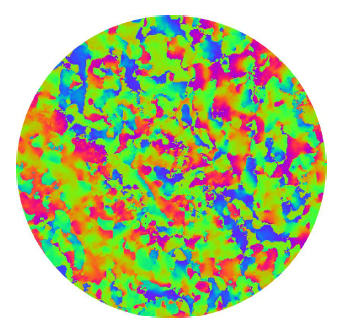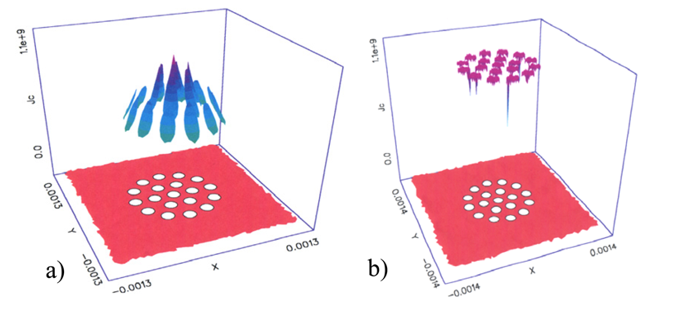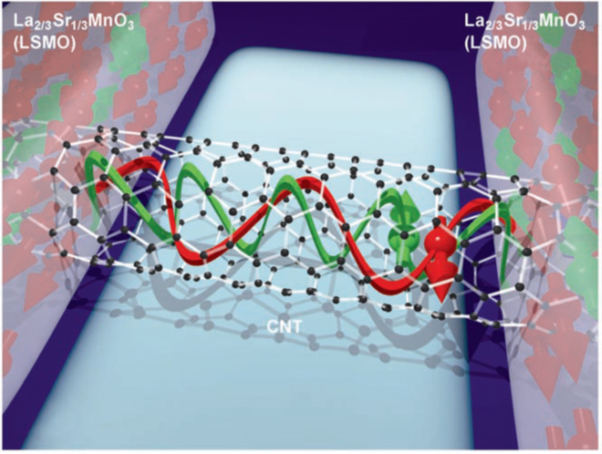
Magnetoelectrics
Magnetoelectric effects arise when magnetic and electrical signals are interconverted using materials, with possible applications that include low-power data storage and magnetic-field sensing. We primarily study ferromagnetic films that experience voltage-driven strain from ferroelectric underlayers. The resulting magnetic changes are imaged using magnetic force microscopy (MFM) and photoemission electron microscopy (PEEM). This latter technique relies on x-ray magnetic circular dichroism (XMCD) to achieve magnetic contrast.
The image to the above shows magnetic domains in a manganite film whose magnetization is inhomogeneous in magnitude. Field of view has diameter 6 micrometres. [After Nature Materials 12 (2013) 52-58].
Spintronics
The ability to send spin-polarized electrons through a non-magnetic channel running between ferromagnetic electrodes could be exploited in future logic and memory devices with low power consumption. Having previously shown that a carbon nanotube can carrry spin-polarized electrons without significant depolarization, attention is currently focussed on its well known allotrope graphene.
Image to the left shows carbon nanotube (CNT) between manganite electrodes of LSMO [A. Fert, Angew. Chem. Int. Ed. 47 (2008) 5956].
Magnetic diverters
Magnetic materials can help to improve the performance of practical MgB2, Bi-2223 and YBa2Cu3O7 superconductors on the macroscale/microscale as magnetic diverters and also on the nanoscale as effective pinning centres.

Figure caption: Spatial distribution of the critical current density in a 19-filament MgB2 wire cross-section in self-field, for different values of relative magnetic permeability, μr, of concentric multi-screens: (a) μr = 1, Ic = 442 A; (b) nonlinear Fe μrmax = 9000, Ic = 628 A. [B A Glowacki and M Majoros, J. Phys.: Condens. Matter 21 (2009) 254206]
The interaction of superconducting and ferromagnetic materials on a macro-scale, has been featured significantly in our research into composite superconducting magnets made from high temperature superconducting (HTS) tape. Some of these magnets contain ferromagnetic substrates upon which the micron thick HTS layer sits. The ferromagnetic material can either enhance or diminish the fields generated by these magnets. FEM modelling of these materials is conducted accounting for non-linear magnetic properties.

